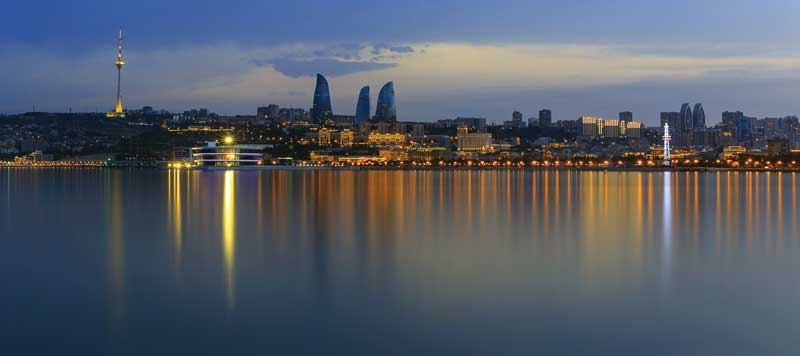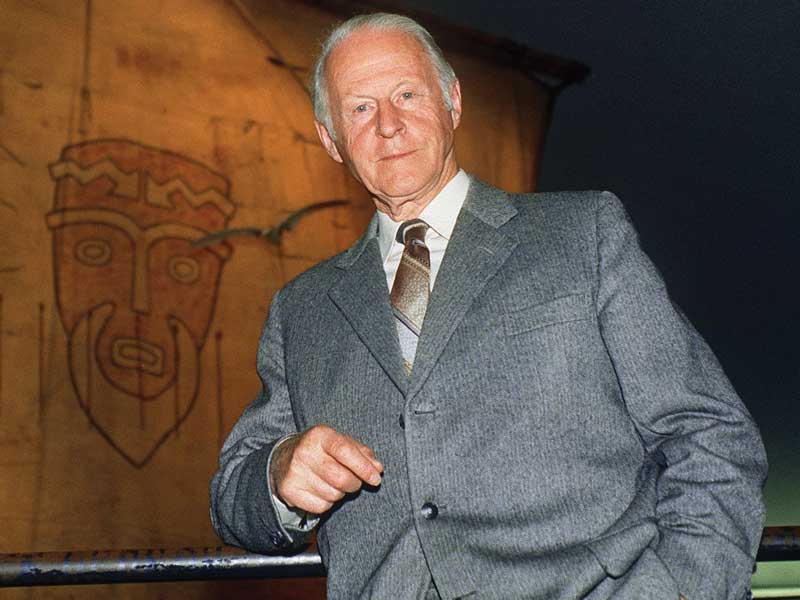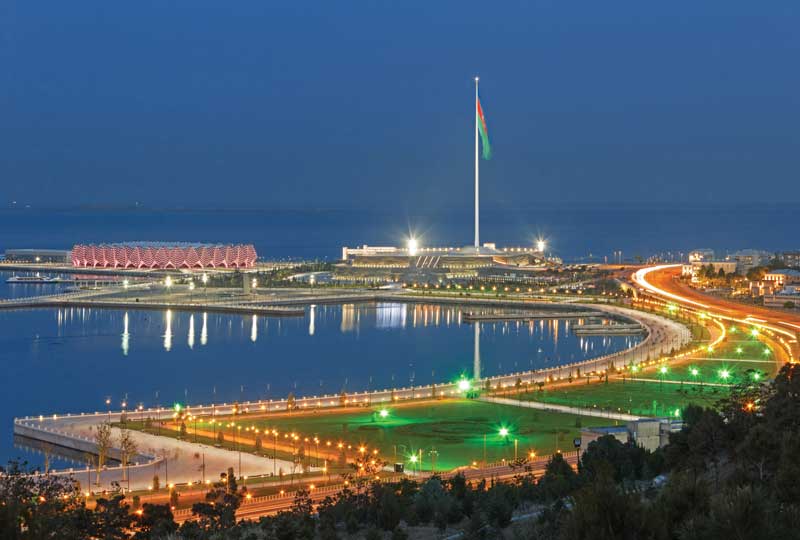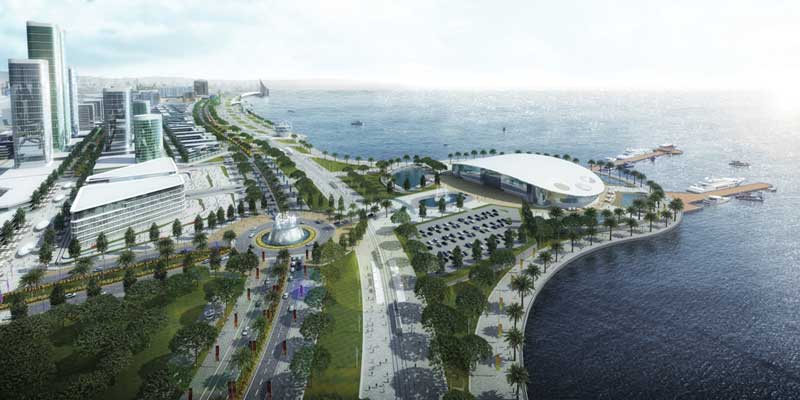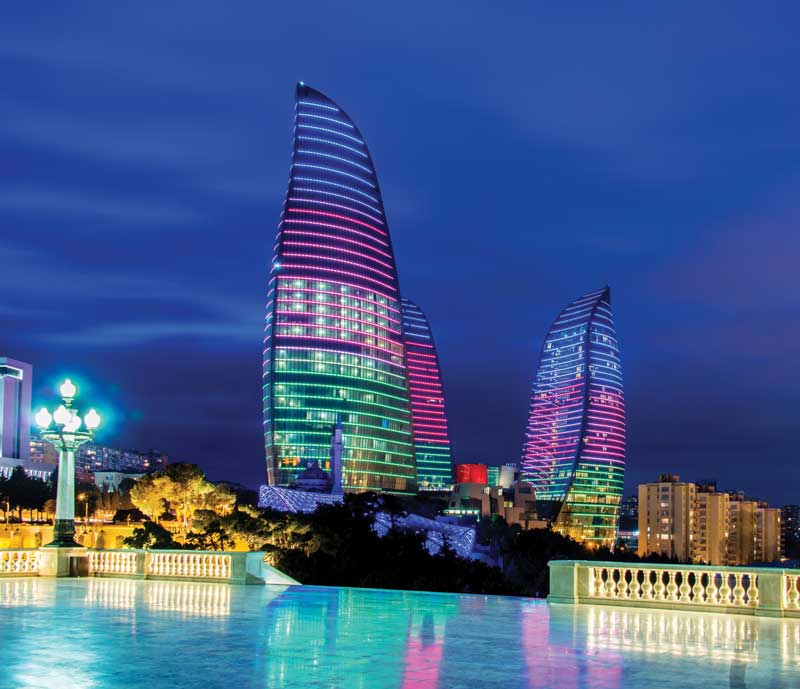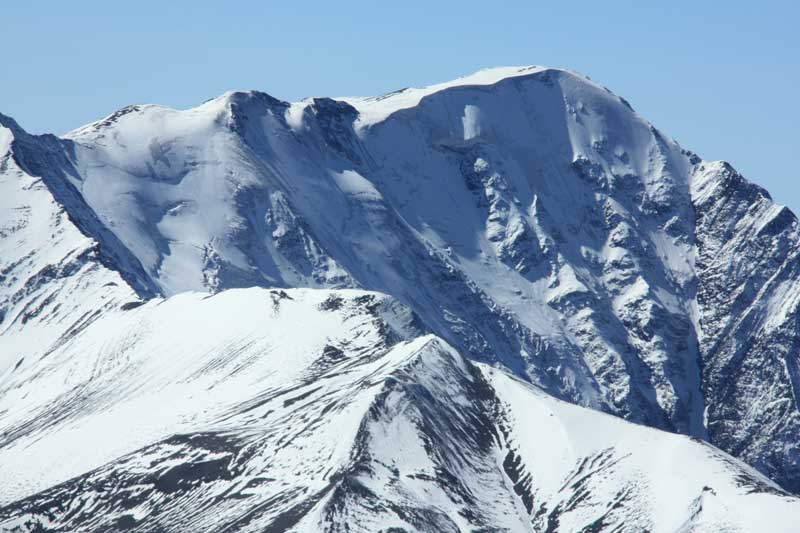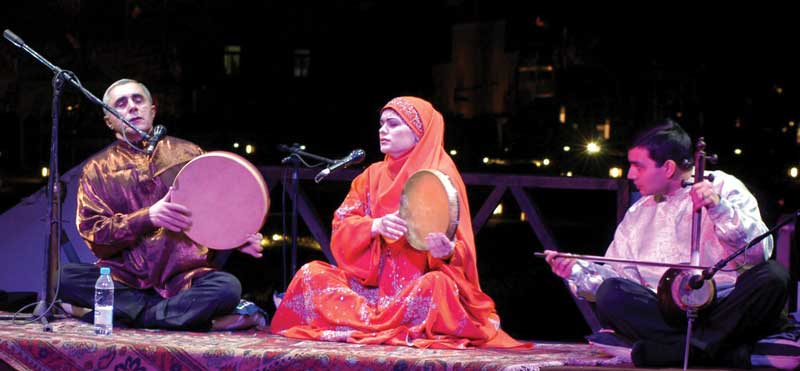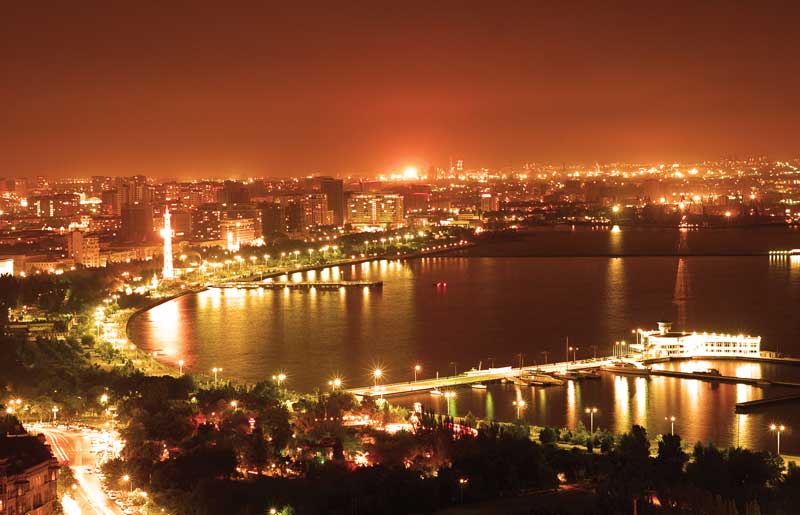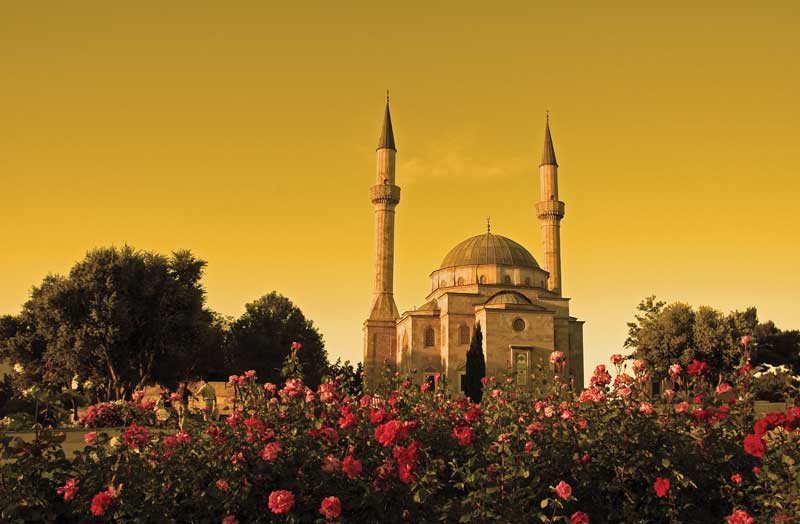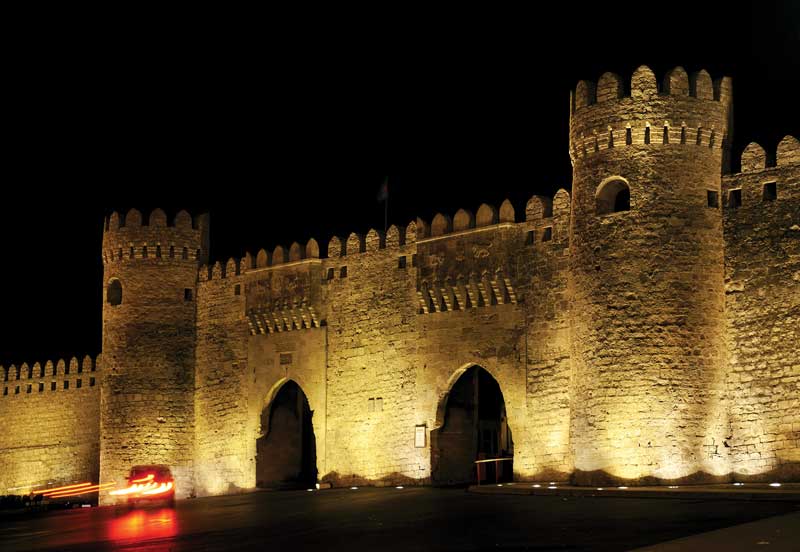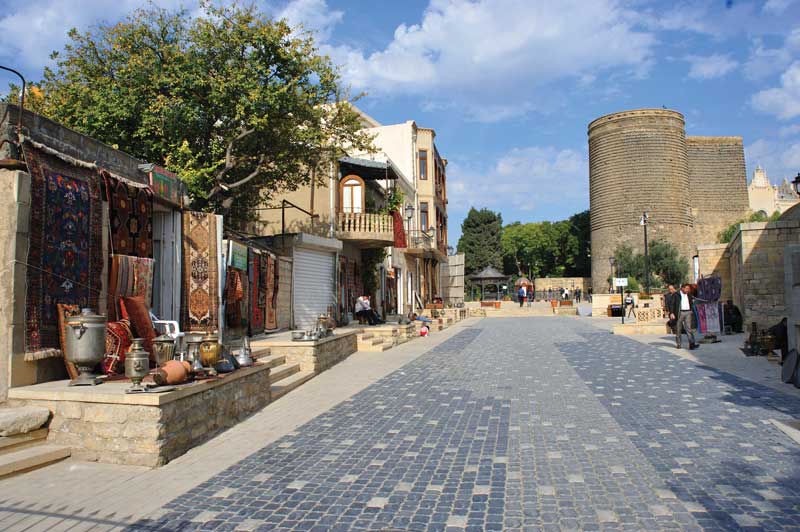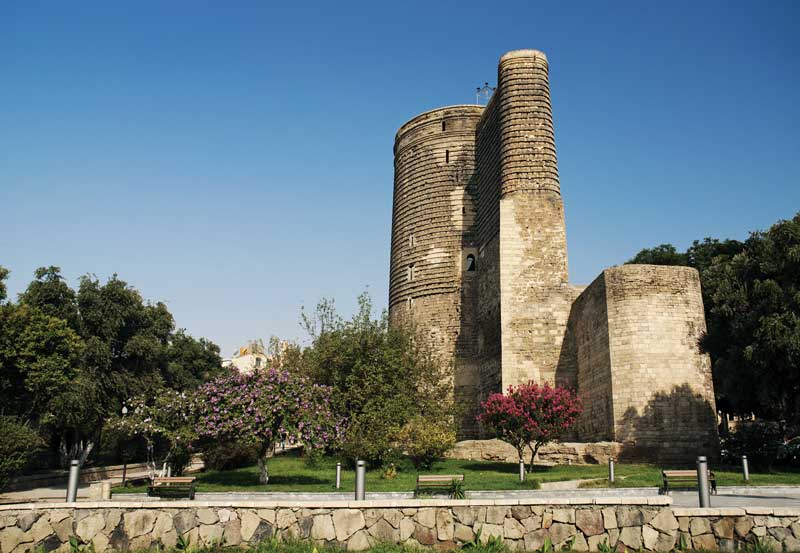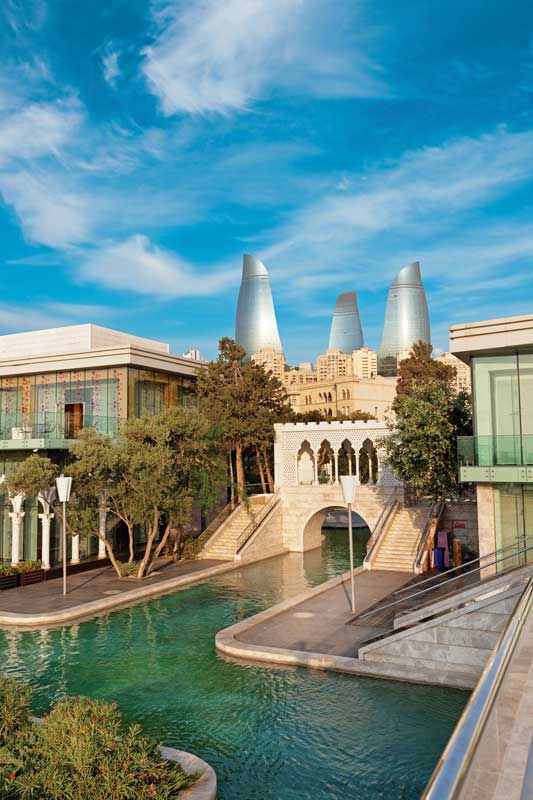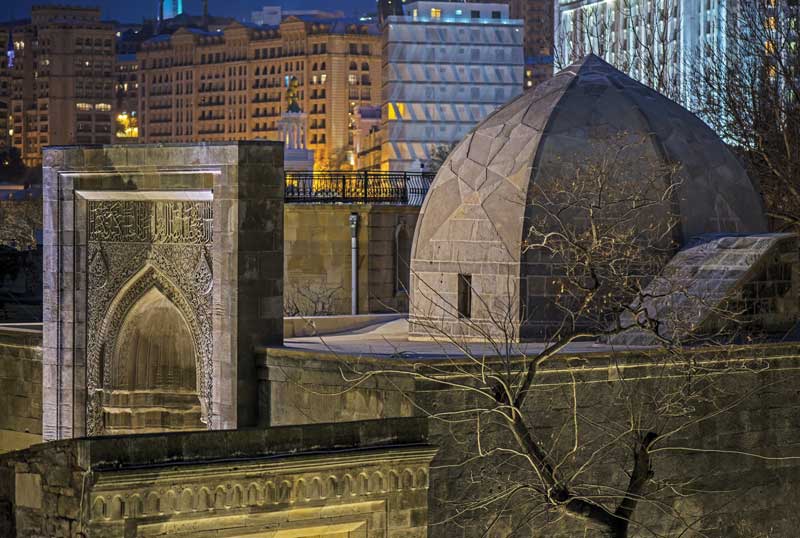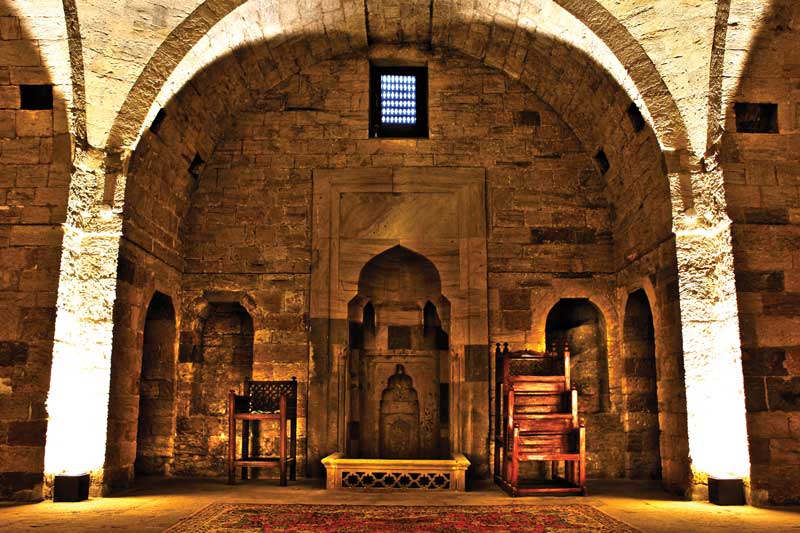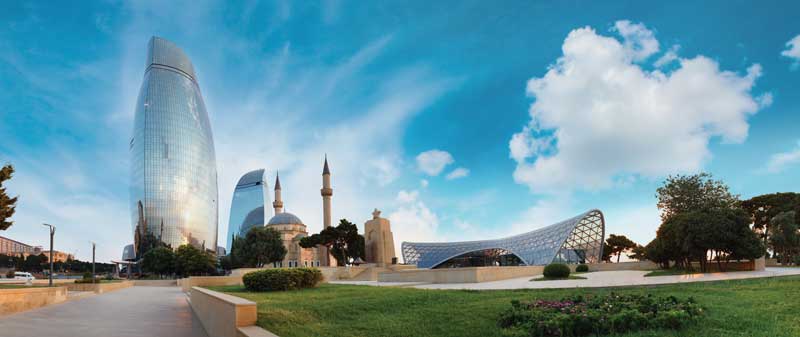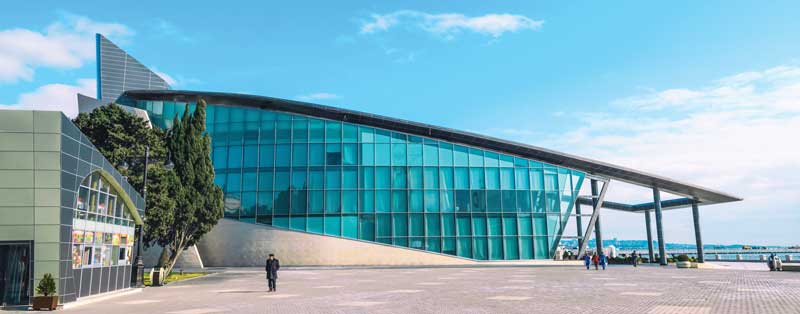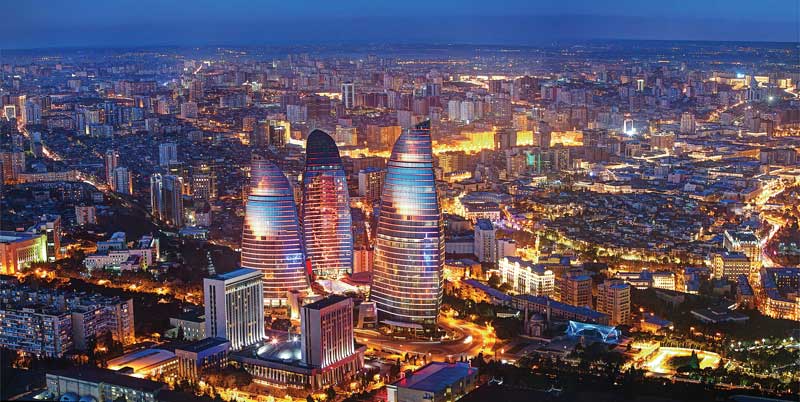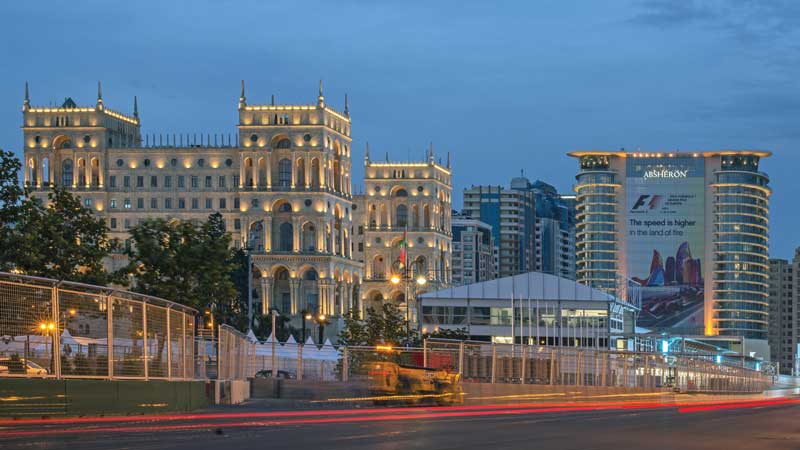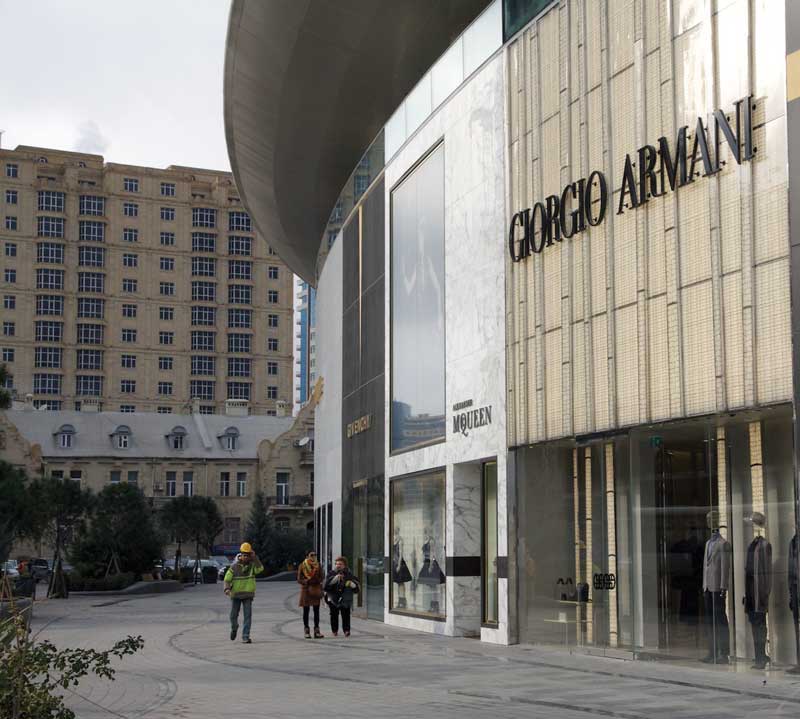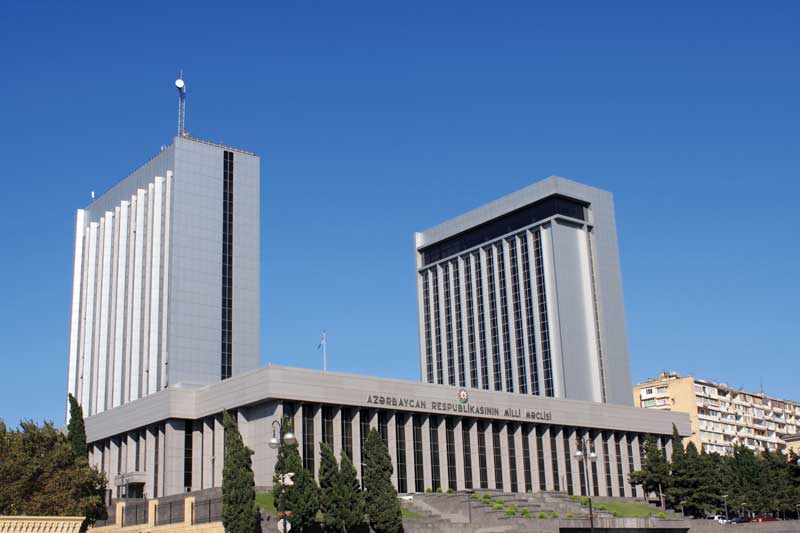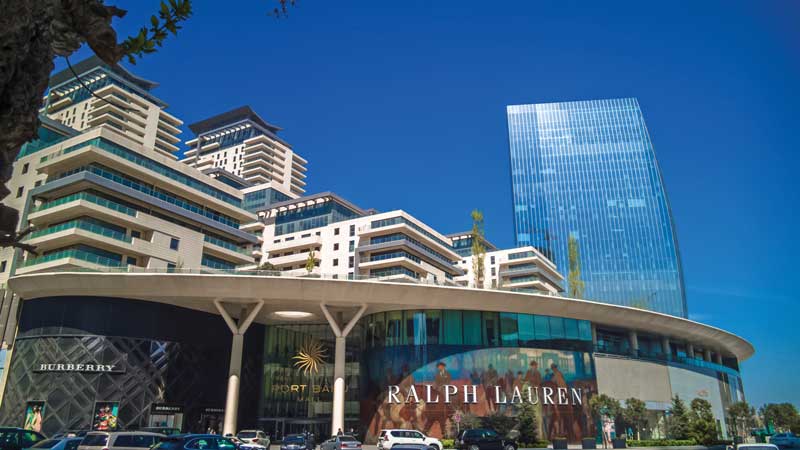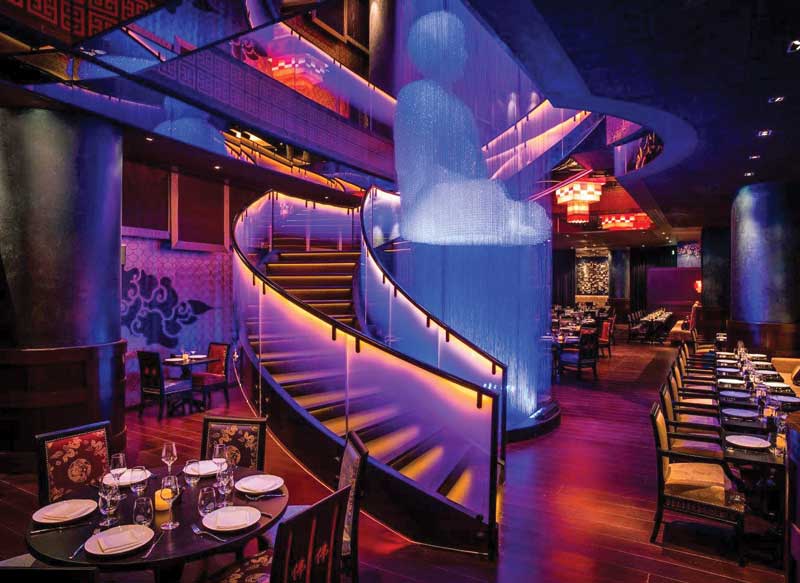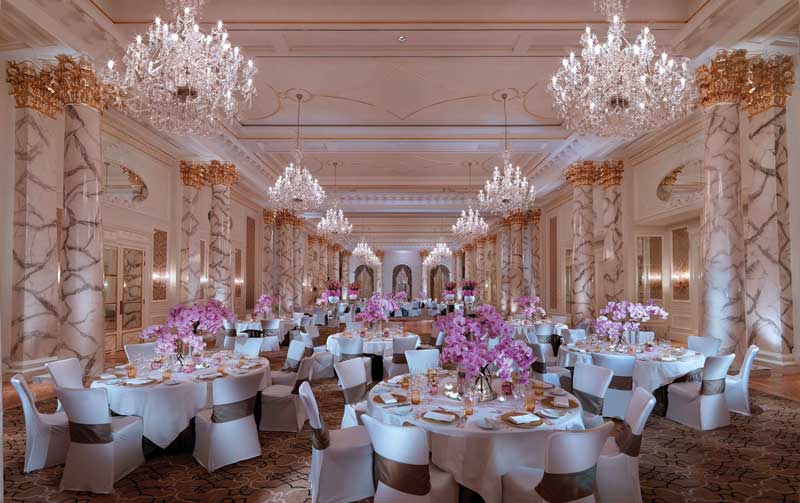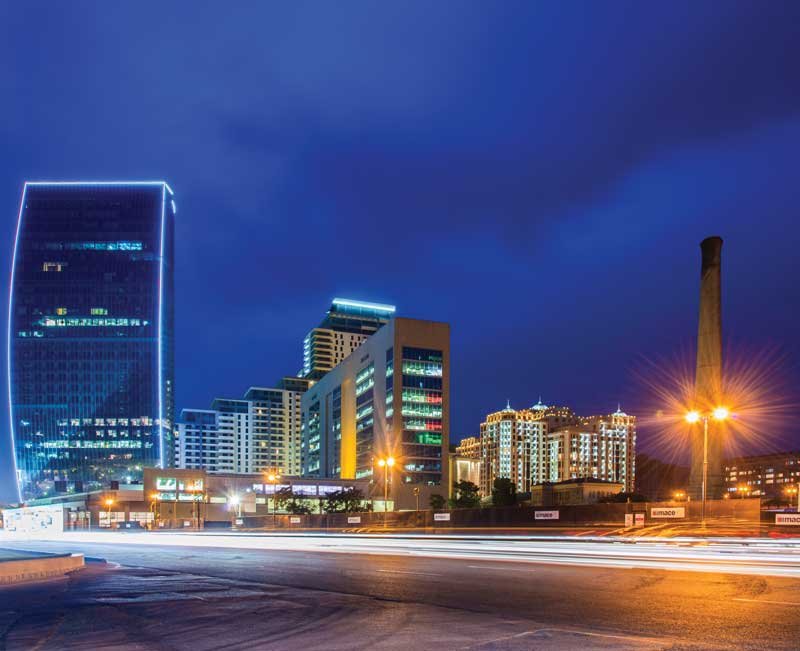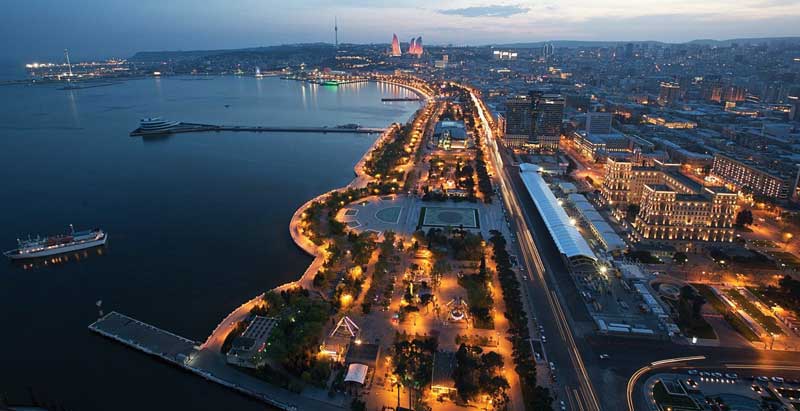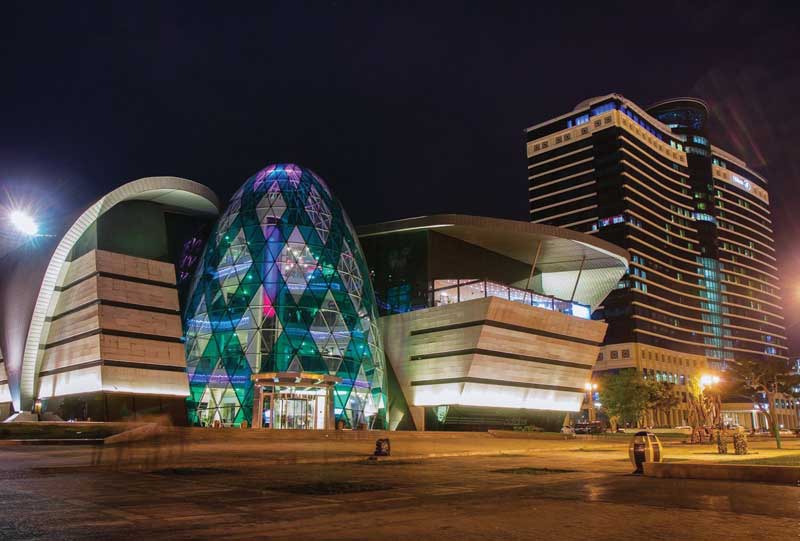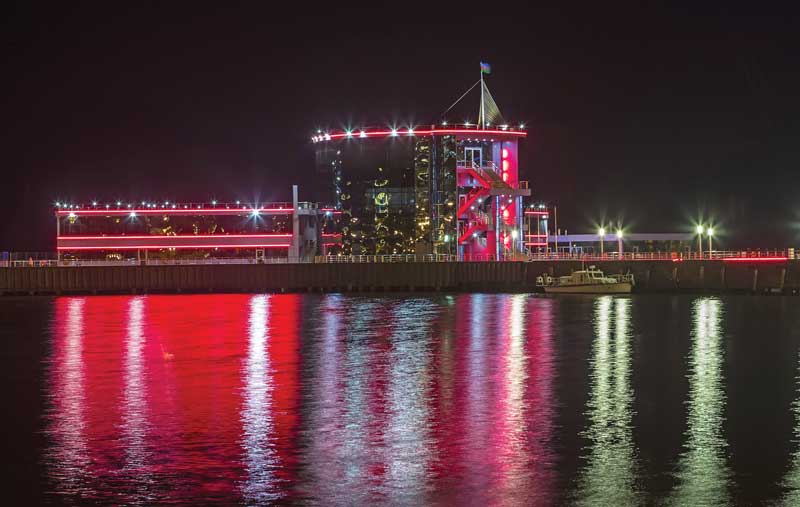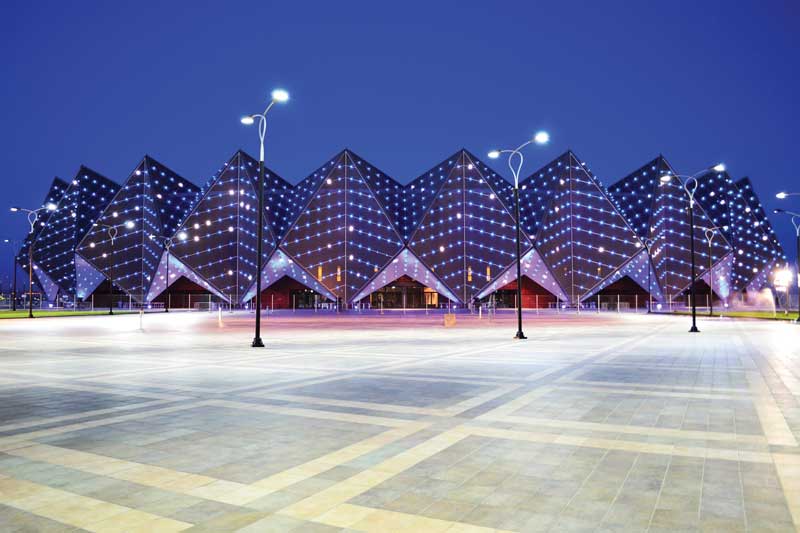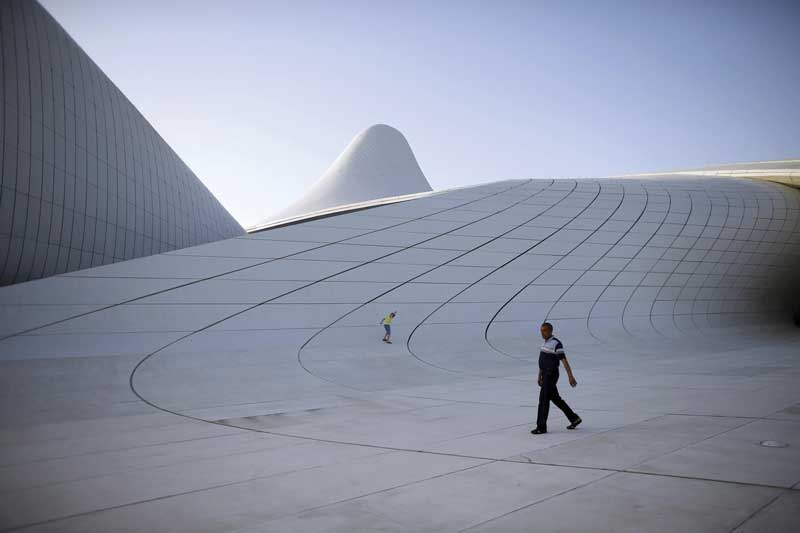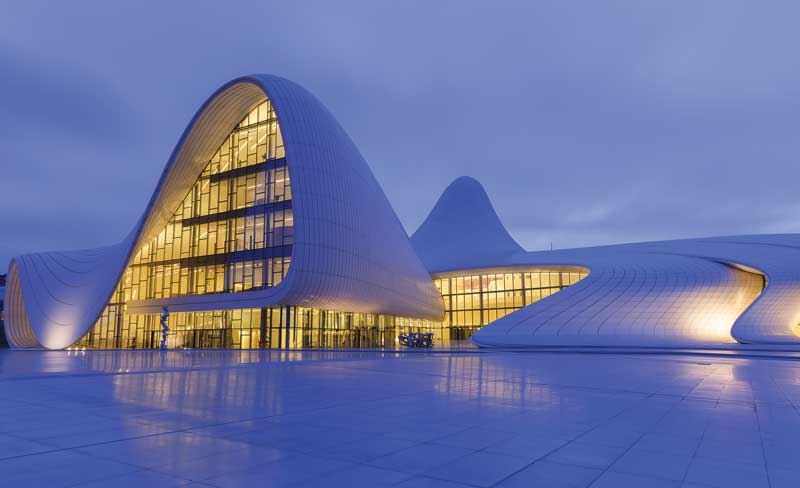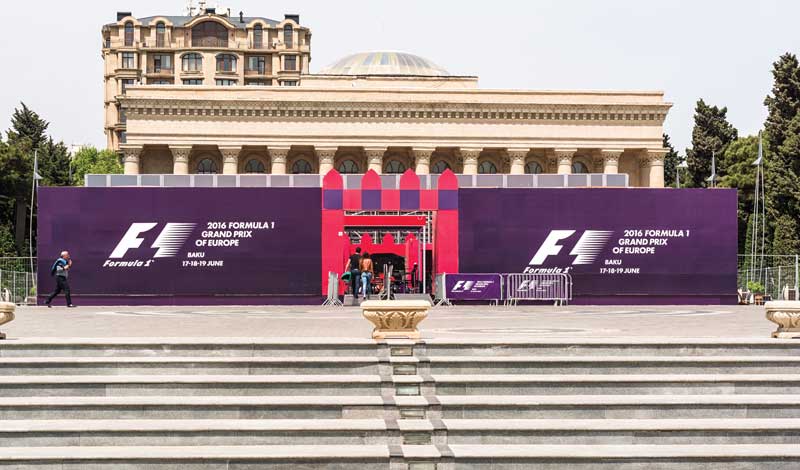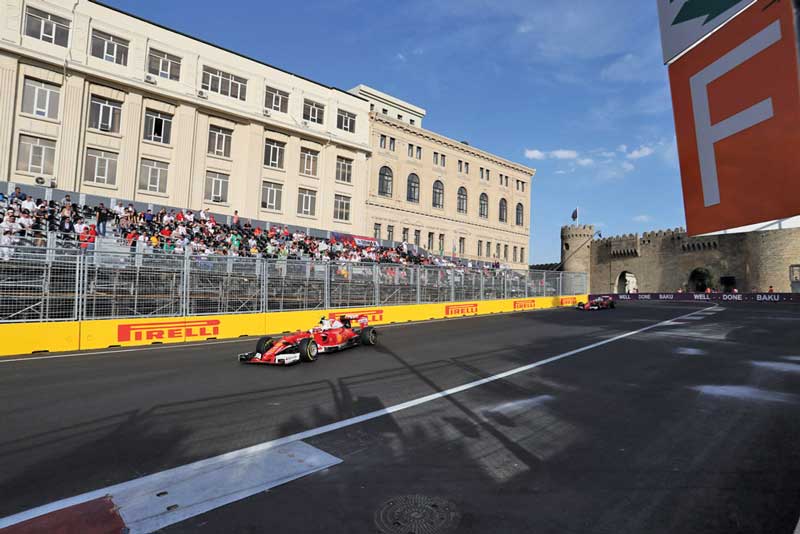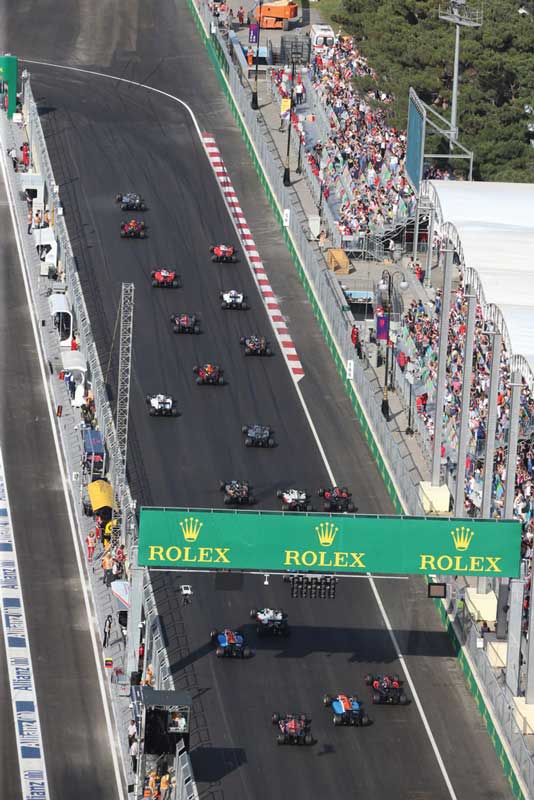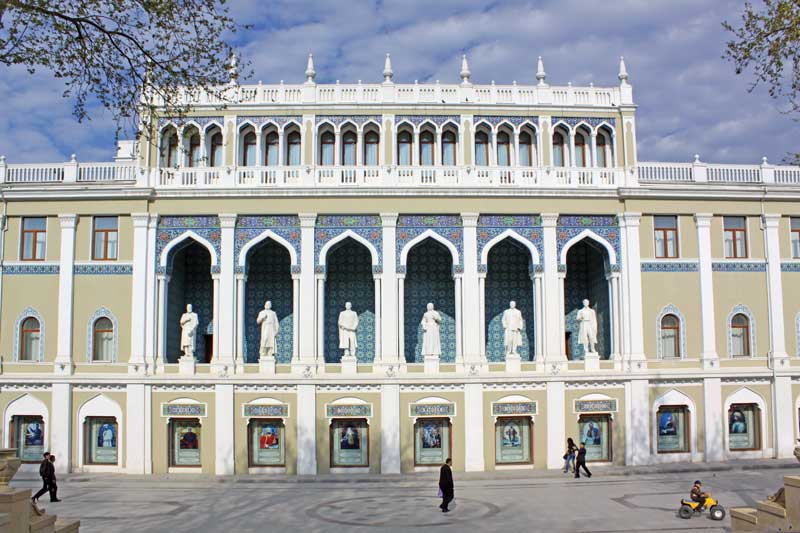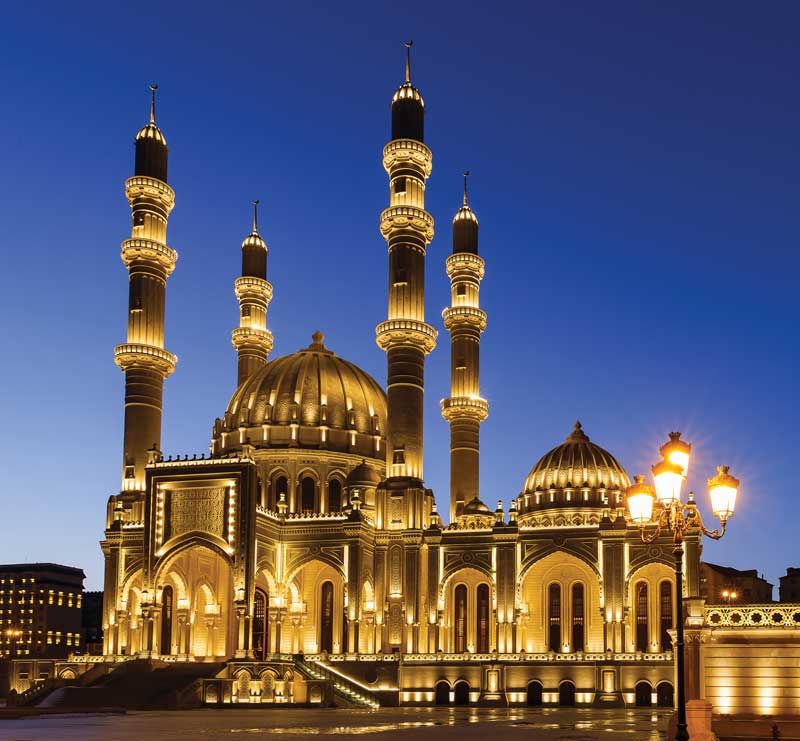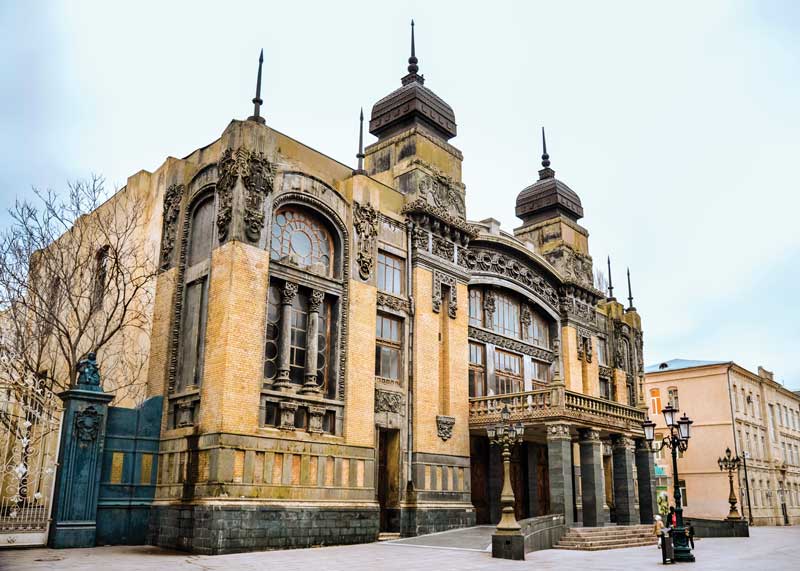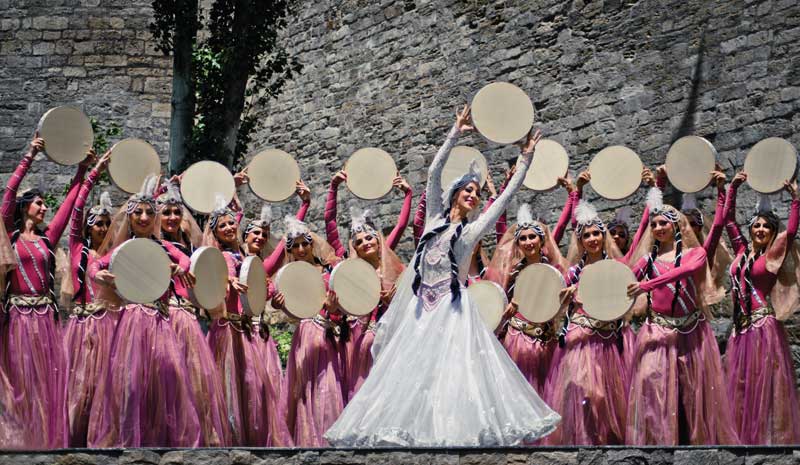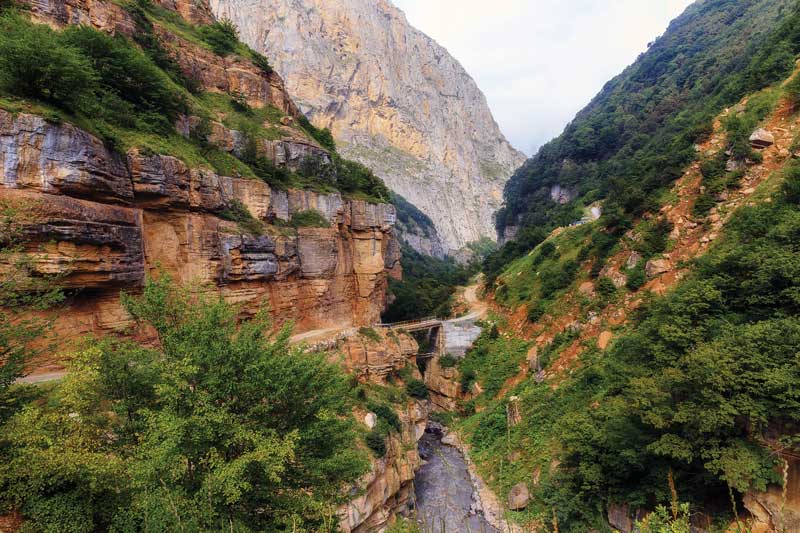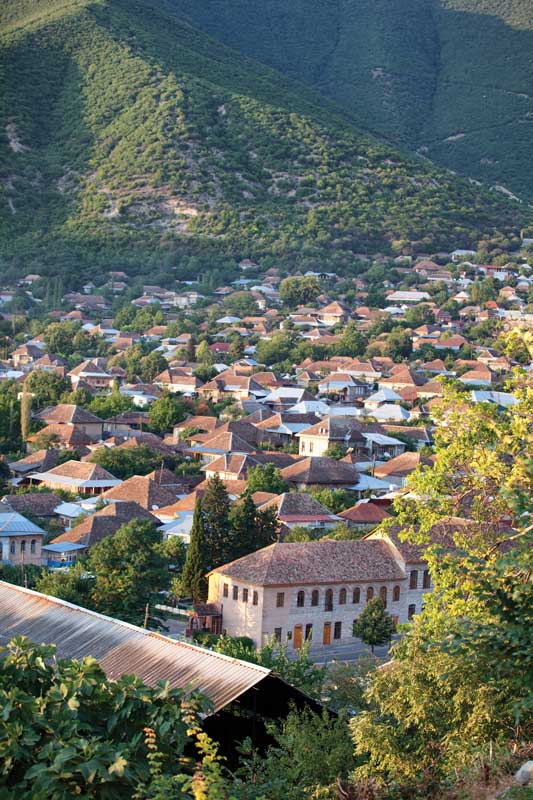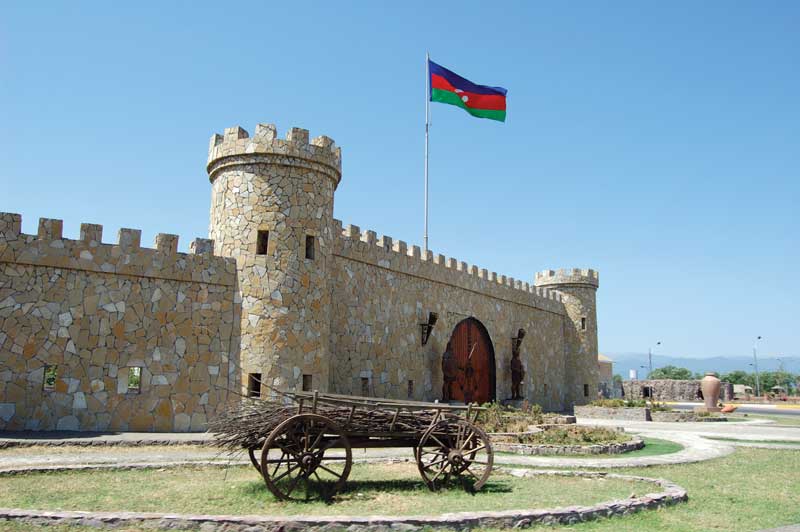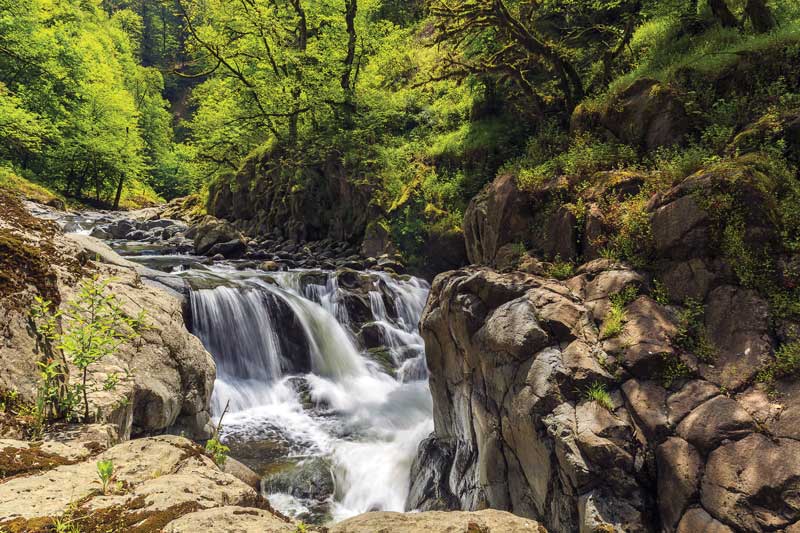Azerbaijan, the fire treasurer
The travellers who arrive at this young republic, which emerges from one of the most ancient nations on the planet, become instantly hooked by a mutual feeling shared by all of humanity, one which originated in these lands, millions of years ago, at the dawn of our history.
It is said that that during the universal deluge, Noah’s Arc finally touched ground in the Najichevan region, an autonomous territory in Azerbaijan, where, currently, a mausoleum keeps his remain. In theory, humanity was reborn in this location. Also mentioned is that Azerbaijani lands where the birthplace of Zoroaster (Zarathustra), and there is historical evidence that his doctrine--Zoroastrianism-- was established in these lands, which can be attested by the numerous fire temples erected across the country. Scientific theories suppose that Odin--the father of the Viking nation--came from the East, between the Caucus Mountains and the Black Sea. Marco Polo, in his amazing tales, referred to this lands as a place where fountains would discharge a “black oil” (petroleum) instead of water. The Norwegian biologist and researcher Thor Heyerdahl expressed it thus: “Oral tradition or fairytale? Where science ends, imagination begins.”
Its name comes the Atropatene, a kingdom that occupied this territory, and which was governed by Darius the Great of Persia, and Alexander the Great beginning in the 4th century B.C. The name was derived from Aturpatakan; Adharbadhagan; Adharbayagan; Azarbaijan; Azerbaijan, which mean, “the treasure, the fire treasurer, or the land of fire.” It is also supposed that the name comes from the words: azer -- fire, and baykn -- vigilant. It shares its borders with Russia, Georgia, Armenia, and Iran. The Berg Karabach enclave and the Naxcivan exclave borders with Turkey. The Caucasus mountain range dominates the country’s scenery; moreover, the Caspian Sea is a geographical landmark. Its location is ideal for merging the network of road and markets of Europe, Asia, Middle East, and the Mediterranean region. Azerbaijan can link China with other countries in Asia and Europe, as well as India with Iran, and Russia. Maritime and river trade routes also span across the country.
Travellers who reach Azerbaijan can take part in an infinite amount of activities: enjoying the beaches; the luxury hotels; the historical town squares; the museums; the forests; the lakes; the skiing centers on the snows of the Caucasus; the natural reserves; spa and health tourism; amongst others.
The Caspian, lake and sea
The Caspian Sea is a colossal saltwater lake, which bathes the coasts of 12 cities to the west of Azerbaijan. It is linked to the northwest by Russia; to the west by Azerbaijan; to the southeast by Turkmenistan; to the northeast by Kazakhstan and Iran by the south. It is fed by approximately 130 rivers which do not link to a larger sea. The most vital of these being the Volga River. Its surface area covers approximately 371,000km2, with a volume of around 78,200km3, and contains 40% of the continental waters of the Earth. Approximately 850 animal species and 500 variety of plants find refuge here. Waterflow has changed drastically on numerous occasions over the centuries due to climate change. The Caspian Sea appears as an ocean, due to its immense size and salinity; like the Black Sea and the Aral Sea, they are remnants of the ancient Paratethys Sea which broke away from a larger ocean some 5.5 million years ago.
Baku’s maritime and commercial port
Founded in 1920, during the period in which Azerbaijan was part of the Soviet Union, it became an independent organization on January 1st, 1992, after leaving the Caspian Sea Navigation Structure. It's composed of five terminals: cargo; containers; fleet; Deobandi petroleum; and passenger terminal. The port offers other services such as: ceremonial and conference rooms rentage, and guest rooms.
It is the largest port in the Caspian Sea, from which it is possible to navigate to Astrakhan; Majach Kala; Central Asia; the Anzali port in Iran; and exit to the ocean by navigating through the Volga River -- Don River -- Azov Sea route, or the Volga River -- Baltic Sea -- White Sea route. A towering ferry can reach any coast in 11 hours. Maritime navigation in the Caspian begins at the Chinese Lyanyuman port, follows the Eurasian corridor, and concludes in Vienna, Austria.
The Marina and the Yacht Club where completely renovated in 2007, and it features world-class services and facilities equipped with state-of-the-art technology to aid incoming vessels and crews. The port also offers a great opportunity for travellers who wish to enjoy a romantic dinner on board one of its luxury yachts, where a first-class chef will serve the finest Caspian dishes a stone-throw away from the shimmering lights of the Baku coast. The ships beautiful lighting, in turn, while paint the sea in an array of luminous colors.
Petroleum, the sap of the planet
Azerbaijan a petroleum-producing region since time immemorial, became the first region the globe to be drilled in 1847, when wells were set up to extract fuel. Currently, there are 1.2 million oil reserves and numerous unexploited oil deposits in the Caspian Sea. Natural gas reserves cover an area of approximately 4.4 billion cubic feet. Between 2003 and 2004, propelled by hydrocarbon production and exports, Azerbaijan's economy grew annually by 14%, unlike any other country during the same period. Rent per capita increased from 900 USD in 2003, to 8,000 USD in 2012.
The biological process that paved the way for “black gold” began some 200 million years ago, long before the existence of humans in this planet. Although petroleum has benefited the energy and labor sectors as well economic growth, it has also created irreparable ecological dangers, and directly contributes to geopolitical tensions.
In the context of the current industry crisis, OPEC (Organization of Petroleum Exporting Countries) cites that lower prices this year are due to the rise of international reserves. Petroleum is still the predominant global energy source, despite incipient efforts to increment sustainable energy offers.
The Caucasus mountain range, a cultural collage
The immeasurable mountainous landscape that forms it is a perpetual landmark of the Azerbaijani territory. An already majestic location due to its rich geography, it is locked in a perpetual cat-and-mouse game with the clouds and the snows that dot some of its peaks. The region is teeming with a multicolor abundance of flora and fauna. Moreover, the mountain range is as vast as the beliefs and languages of the people, who consider themselves repositories of a cultural, historical, and natural fortune, which makes them the custodians of a region they must safeguard and preserve.
The Caucasus divides Asia from Europe, and boasts a significant climate, cultural, ethnic, and linguists value along its 1,400km, on where some of the most relevant pages of human history have been written.
The Mugam, musical soul of the Azeri
Centuries old, its origins lie in prayers and lullabies, passed down from generation to generation. The Mugam is a species of musical cult, poetic and philosophical. Its roots are set in the past but are constantly enriched by the contemporary musical forms. Its structure is based on improvisation, but the tones, the chords, and the sound in general are regulated by seven modes, each one contributing a particular musical and emotional significance. This is one of the cultural treasures of the Azeri people, now recognized by the UNESCO. Some of the traditional instruments that they use are: the tar (a lute with a double wooden basin), the kamancha, or kamanche (a string instrument that is played with a bow), the doyra, the daf or ghaval (a percussion instrument with rattles), and the singer’s voice, called jananda, which can be male or female. The foremost figure in this genre is Alim Qasimov, named, “National Living Treasure of Azerbaijan.”
Baku, city of wind, sea, and light
In ancient texts, Baku was named as the capital of miracles, and was mentioned in manuscripts during Menes lifetime while he was the first pharaoh of the Ancient Egypt and founder of the 1st Dynasty, in 3150 b.C.. It is also mentioned in stone tablets (which were compiled by generals Pompey and Lucius during the Caucus invasion under the command of the first Roman emperor, Caesar Augustus Octavius), some of which still can be seen in various places.
The origins of Azerbaijan’s capital-city date back to the 6th century b.C.; however, it was founded in 885. It’s name--of Persian origin--it’s attributed to two possible meanings: bad kube, city of wind; and bagh kuh, mountain of God. In spite of this, there exists other theories concerning the origin of the name. In 1991, it became the capital of the new independent Republic of Azerbaijan. As of today, aerial views of the city create an image where the past and our modern time fuse and display a sensational panorama.
Baku, diverse and prodigious
Old City and Fortification.
Many of the walls and some of the buildings have been kept intact since the 13th century. During this historical journey you’ll be able to see: Persian baths; caravan stations (where they were parked); mosques and their minarets; art galleries; restaurants; tea salons; antique shops; and approximately 40 monuments which dot the colorful streets; as well as street theater companies, musicians, and dancers. We recommend that travellers walk along the fortification’s walls in order to get a clear idea of its enormous dimensions.
The Maiden Tower
It can be admired as its builder, Masud Ibn Davud, did in the 12th century. The Tower’s origin dates back to Neolithic times. Researchers suggest that the original structure was hollow, and probably used for liturgical purposes. The current building reaches a height of 29.5 meters, with a base diameter of 16.5 meters. It is a national landmark, and the central theme of countless legends.
The Palace of the Shirvanshahs
Ancient resident of Shirvan rulers (15th century a.D.), the site is home to various buildings of religious and cultural relevance. It is considered a jewel of Azerbaijani architecture.
The Old City and the monuments previously described were included in 2000 on the UNESCO World Heritage Site list.
Modern Baku
Contemporary Baku, however, is a capital city with first class amenities: skyscrapers, high-end fashion stores, round-the-clock security, beaches, hotels, and luxury restaurants. The city’s streets are always in order, safe and clean, and offer plenty to enjoy.
Bakú, vibrant and modern city.
One of the main streets of Baku is the Neftchilar Avenue, which runs from the walled city to the modern downtown district. It is ideal for shopping experiences in some of the most exclusive boutiques: Versace, Gucci, Christian Dior and Hermes, as well as renowned jewelry shops such as Bulgari, Tiffany, Roberto Coin, De Grisogono and Choppard. Moreover, several shopping centers, including the largest and most recently constructed of them all, Port Baku. It features more than 300 stores by such brands as Emporio Armani, Balenciaga, Burberry, Ralph Lauren, Valentino, amongst others.
Out of all the cities in Azerbaijan, Baku has the most vibrant and eclectic nightlife. Its restaurants, bars, and clubs remain open until late morning, especially during the weekends. These include: Buddha Bar, Razzmatazz Cocktail Bar & lounge, Eleven restaurant--lounge, Chinar, and La Vida Tequila Bar, a tribute to Mexico in Azerbaijan.
Baku Boulevard, or maritime walkway
It is a place that unfurls numerous enhancements: fountains, statues, extensive gardens, botanical gardens of all kind -- some acting as the home for trees that over 300 years old; a canal zone, playground for children, outdoor running track, the Park Boulevard mall where one can find numerous stores, movie theaters, cafeterias, supermarkets and international restaurants. It’s also possible to take a ferry that navigates across the Caspian Sea. Our constant companion during this journey, it offers panoramic views of the city from its waters.
Crystal Hall
A beautiful construction which hosted the Eurovision 2012 festival, it looks towards the city port. Moreover, it is the new show center and main entertainment hall of the city.
Heydar Aliyev cultural center
An architectural masterpiece, designed and built by Zaha Hadid between 2008 and 2013, it rapidly became one of the symbols of the city. It is the seat of cultural activities in Azerbaijan. A structure free of right angles, it gives one the illusion that it can be traversed freely and without pause. It invites one to throw themselves on the white walls and slide across each of them.
Europe’s Formula 1 Grand Prix
On June 17th, 2016, the first European Grand Prix Formula 1 took place in the new and innovating urban circuit in Baku. Designed by Herman Tilke, this route is comprised of 20 turns and 2 long stretches, with a total length of 6.006 / 3.732 miles. With top speeds of 360km/h, it is projected to be the fastest street circuit in the world.Luminaries from across the racing world were present at the inaugural event.
Including Nico Rosberg of the Mercedes-Benz team, who won the race and his second Grand Slam. The event will celebrate its second edition in 2017.
Azerbaijan's Museum of National Art
Founded in 1920, it is composed of 60 exhibit rooms displaying numerous works of art, including antiques and decorative items. Although its central themes are artistic local creations, it also exhibits pieces from European and Asian artists. The collection showcases pieces dating from the 15th to the 21st century.
Azerbaijan’s State Museum of Literature
Its collections are formed by unique manuscripts from writers, poets, philosophers, scientists; beautiful miniature illustrations; classical book; rare magazine and newspapers; contemporary copies of books by Azerbaijani authors, and authentic documents from various European and Oriental languages.
Juma Shamaki Mosque
It is considered the first mosque in the Caucasus region, after the cathedral of the Derbent Friday Mosque, built int 734.
Tezepir Mosque
Located in the Absheron territory, this monument from the 14th-15th century is considered a religious center in Azerbaijan, as well as in the entire Caucasus region. The mosque was substantially reformed between 2007 and 2009.
Bibi-Heybat Mosque
It is a religious and spiritual center of great significance for Islam, as it harbors the tomb of Ukeyma Khanum, on of the descendants of the prophet Muhammad, a figure revered by the Azeri.
Theaters and concert halls
State Philharmonic of Azerbaijan
The main concert hall of Azerbaijan, it was created on the 25th of May, 1936. It is the seat of the Azerbaijan Symphonic Orchestra, and six other groups which focus on classical, choral, dance, and folklore music. Entrance tickets can be bought at the gate starting at 11:00 A.M.
Azerbaijan State Academic Opera and Ballet Theater
It is the largest theater dedicated to artistic genres. In 1908, “Leyla and Madzun”, by Uzeir Jadzibayov, was the first piece to be performed here. In 1940, the first ballet, “The Tower of Doncella” (E. Bedelbeyli) was performed, and since then, it has hosted innumerable theater productions. As time has passed, it has incorporated in its repertoire pieces, forms, melodies, and traditional Azerbaijani instruments.
Ganja, tradition and nature
It is the second most important industrial and cultural city of Azerbaijan, with a population of 820,400 inhabitants. Historians believe that the name comes from the modern Persian “ganj’”, which means “treasure,” or “treasury.” This suggest that the city existed during Pre-Islamic times and, quite probably, dates from the 5th century b.C. In 2013, it won the title of “European Youth Capital 2016”, a prize given by the European Youth Forum for a one-year period. It is recognized by its architectural richness: ruins, towers, bridges, all dating back to the 11th to 12th centuries; the Caravenserari, an ancient type of edifice, which dot the main roads in which caravans would stop during their long journeys through the Silk Road; religious sites (14th to 17th centuries), the beauty of its landscapes and gastronomy. One of the prefered places in the Ganja is the Nizami Ganjavi Mausoleum, named after a celebrated figure in azerbaijani literature, who was born in this city in 1141, and where he expired in 1209.
Guba, cultural reserve
Founded in the middle of the 18th century, it is located 170 km to the north of Baku. It stands out for the unequaled beauty of its mountains. The city is home to an almost infinite number of historical and archeological locations, such as: the tomb of Aghbil, dating back to the 15th centuries, as well as numerous mosques. The town of Khangaly is found in the suburbs. From one of the streets, a ancient temple is erected in honor of Zoroaster, and was built in the 9th century in the place of the “eternal fire.” The villagers of Khangaly are in and of themselves a historical and ethnic phenomenon. Around 1,000 of these have conserved their language, their dress, their ceremonies, and traditions intact, as well as their own regulations and laws. We recommend that travellers see the Afurdzhin waterfalls, and the Thengi canyon. The people of Guba create some of the most gorgeous carpets of the region, and are without parallel.
Shyeki, beauty and history
In Shyeki, there exist a copious amount of mosques and sites of historical interests. To enter the town, one must pass through medieval towers that give a clear idea of just how far that Caucasus and its snowy peaks are. There, one can also find stone formations amongst the many buildings adorned with artistic mosaics, colorful windows, and carved wood. Time seems to stand still in the drawings of the stained glass, which filters down into the interiors and unto to the walls and floors, forming curious figures. If you decide to stay in Shyeki, take advantage of staying at the Shaki-Karvansaray hotel, which was first used as an inn on the Silk Road. Furthermore, take the time to walk around the streets until you reach the woods, which will truly take your breath away and leave you longing to lay on the ground and enjoy a timeless and delicious sense of peace.
Lankaran, healthy tourism
The city is located on the southeastern part of Azerbaijan, on the border with Iran. It is home to exquisite architecture, wonderful weather, and astonishing natural beauties. Enjoy the thermal waters as well as the black sands of the Caspian coast in this area, some of which boat healing properties, most suited for healthy tourism. Travellers will also find here the Lankaran sanatorium, where a relaxing Itisu water-based treatment originally derived from the springs located at the Gaftonisnki can be enjoyed upon request.
Noah and Azerbaijan
Noah appears inside the Biblical tradition as the chosen figure to save mankind and the wildlife by way of an arc that could survive the global deluge. In the Qur'an, sacred book of Islam, the figure of Noah (Nuj) also makes an appearance, and is considered as one of the prophets.
Nakhichevan is an autonomous region, separated from Azerbaijan, by Armenia. Legend has it that it was founded by Noah and after running aground at the summit of Ilandag, 40 days after the deluge. There exists a funerary monument at this site, which dates back to 1539 b.C., according to some Persian historians. This place held the “relics of Noah” until 1983. The sanctuary is not only venerated in Azerbaijan, but also by other countries in the Middle East.
Text: Maruchy Behmaras ± Photo: © 2015 BAKU CITY CIRCUIT OPERATIONS COMPA / © DREAMSTIME / AZERBAIJAN TOURISM / AZEMBASSY / © DAVID MASSIE / © NICKOLASTOCK / © ELNUR / © ALEXANDER MELNIKOV / © JAMMIR / © ELECTROPOWER / © JACKMALIPAN / © PHOTOALIONA / © LEONID ANDRONOVINDEPENDENT / © VASILIS VERVERIDIS / © BAZRUH / © JACKMALIPAN / © SADIK GÜLEÇ / NATIONAL GEOGRAPHIC / ELNIR / AD / CLEO SAMS / RA / ASD / DIMITRI ZANCOV / AS / ROKJM / IDSC / REDEEMIN / NAYEB ZOAR / MUZZAFAT COR / DNL SNEILI / RED / BARE / RED ZMS / F1 / RAM FESA / EDITORIAL LICENSE / DARIO LORENZI


